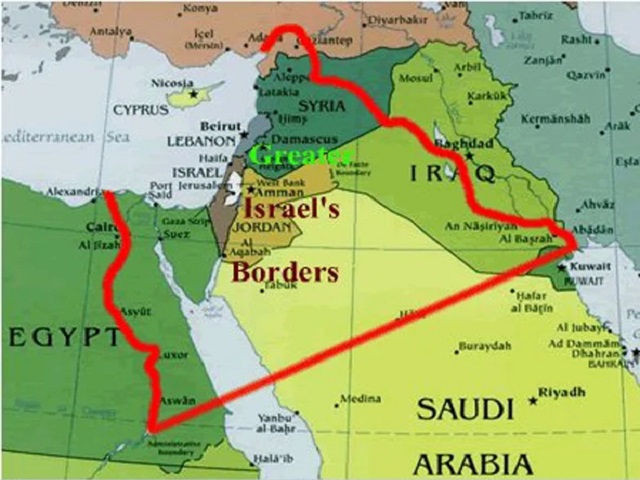Massive protests in Sana’a as Houthi leaders proclaim the Gaza truce a victory — accusing Israel of conceding key ideological aims.

Location: Sana’a, Yemen | Date: Saturday, October 11, 2025
In a sharp and symbolic turn of events, thousands of Houthi supporters poured into the streets of Sana’a this week to celebrate what their leaders called the halt of the so-called “Greater Israel project.” The spontaneous demonstrations followed the announcement of a ceasefire agreement between Israel and Hamas, prompting the Houthis to frame the development as a vindication of their decades-long alignment with Palestinian resistance.
With placards declaring “Palestine Won” and chants decrying Israel’s aims, the protests offered a rare glimpse into how the Yemen conflict—long overshadowed by internal turmoil—aligns with broader regional dynamics.
Celebrations, Rhetoric, and Political Messaging
According to video footage and local reports, protesters flooded major streets in Sana’a, waving flags, beating drums, and vocally aligning Yemen’s fate with that of Palestine.
Houthi leaders addressed the crowds, characterizing the ceasefire as evidence that Israel’s long-term ambitions had been checked. They declared that the “Greater Israel project” — a phrase implying Israel’s territorial and ideological expansion across the Middle East — was now “halted.”
One local Houthi speaker told the gathering: “They thought they could erase Palestine. Through our struggle and solidarity, their goals have failed.” The crowd responded with chants of “Allahu Akbar” and “Palestine will live.”
Meanwhile, Sayyed Abdul Malik al-Houthi, the movement’s supreme leader, reaffirmed Yemen’s commitment to the Palestinian cause and pledged vigilance. He announced that Yemen remained on “full alert,” while declaring that the ceasefire proved Israel’s failure in its objectives.
The Ceasefire’s Ripple Effects and Regional Symbolism
The Israel-Hamas truce, mediated by external actors, has had ripple effects that extend far beyond Gaza’s borders. The Houthis’ protest underscores how regional actors view the conflict not simply as a bilateral war but as a struggle of narratives, symbols, and alliances.
To the Houthis, who have long seen themselves as part of the “Axis of Resistance” including Iran, Hezbollah, and Palestinian groups, the ceasefire lends symbolic legitimacy to their long-standing posture.
However, the cessation of violence is not absolute. Reports indicate that Houthi forces have declared they will monitor Israel’s compliance with the truce and may resume actions if violations occur.
Notably, while the Houthis have committed to easing attacks on international shipping (as part of earlier diplomatic agreements), they have explicitly stated that such truce terms do not apply to Israel.
Strategic Ambiguities and Military Realities
Despite the rhetoric of victory, Yemen remains a complex theater of conflict, with multiple overlaps and conditional relationships.
- In May 2025, a U.S.-brokered truce with the Houthis in the Red Sea region halted attacks on American maritime assets—but that truce explicitly did not apply to Israel.
- The Houthis continue to assert their right to target or pressure Israeli-linked structures, should hostilities resume.
- At the same time, Israel has not relented in its regional posture. In prior months, Israeli airstrikes targeted Houthi installations in Yemen, including operational and command sites.
- Some analysts suggest that the Houthis see the ceasefire as an opportunity to reposition politically, reduce pressure on their internal fronts, and expand influence through symbolic victories.
Civilian and Political Implications
The mass demonstrations in Sana’a reflect more than mere symbolism — they carry domestic and international signaling intentions.
Domestically, the Houthis may be seeking to bolster popular legitimacy, tapping into pan-Islamic sentiment and casting themselves as defenders of oppressed Muslims.
Internationally, the protests send a message to regional states: Yemen remains engaged in the broader ideological conflicts of the Middle East, not just its own civil war.
However, challenges persist. Yemen is facing severe humanitarian crises, internal factionalism, and infrastructure collapse. The Houthi regime’s ability to sustain ideological momentum will depend on its capacity to deliver relief, stability, or perceived wins to its population.
Risks, Uncertainties, and Potential Flashpoints
While the present moment centers on celebration and symbolism, several risks loom:
- Ceasefire violations: Should Israel or Hamas act in ways perceived to breach the agreement, the Houthis may feel compelled to intervene or re-escalate hostilities.
- Regional escalation: The linkage of Yemen to the Gaza conflict raises risks of broader conflict spanning Iranian proxies, Gulf states, and global powers.
- Diplomatic contradictions: The U.S.–Houthi truce in maritime zones, which excludes Israel, inherently sets contradictory expectations. The Houthis might face pressure to clarify their stance or shift posture.
- Internal legitimacy: Over time, symbolic gains may fade unless matched with tangible outcomes for Yemeni citizens — food, reconstruction, governance.
As one regional analyst put it: “The Houthis are playing the long ideological game. They need these symbolic victories now to condition regional perception.”
Conclusion
The scenes in Sana’a — thousands marching, slogans echoing across alleyways, leaders declaring Israel’s ambitions thwarted — are more than a local protest. They reflect Yemen’s deep entanglement in the Israel-Hamas conflict, and a broader regional battle of narratives where symbolism carries real weight.
The ceasefire may have paused active fighting in Gaza, but the reverberations in Sana’a make clear that the war of ideas, alliances, and perceptions is far from over.
Source:
